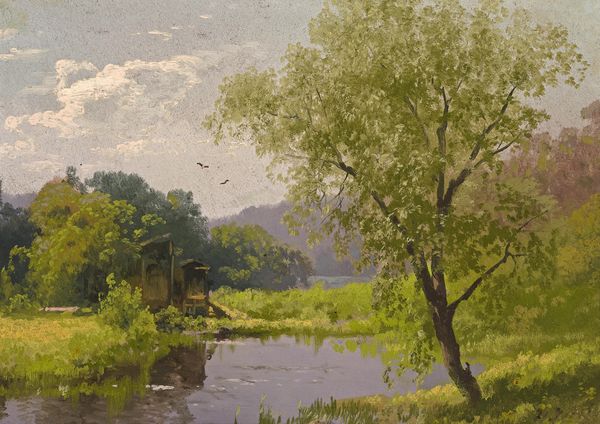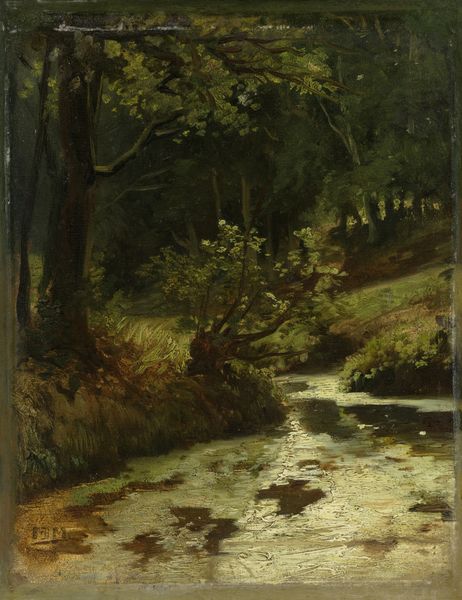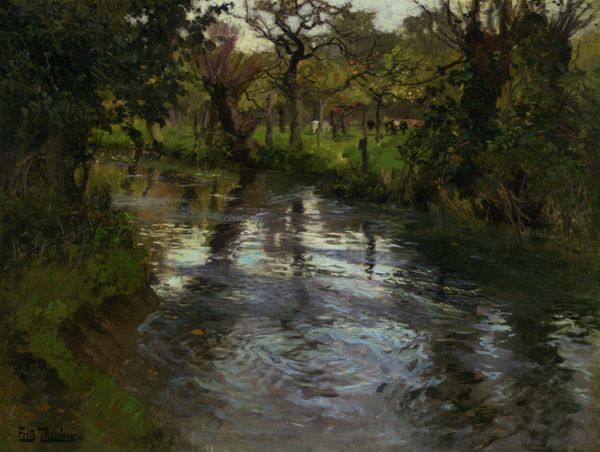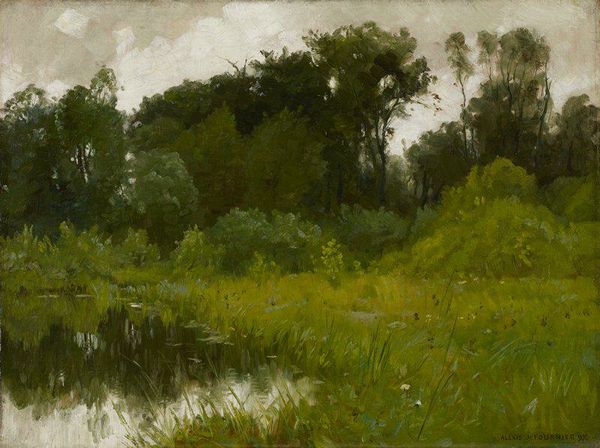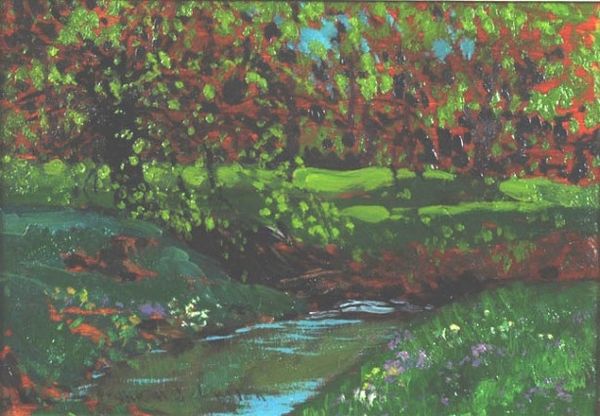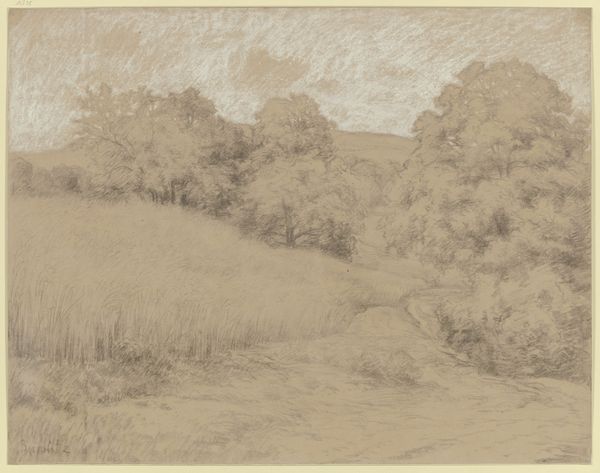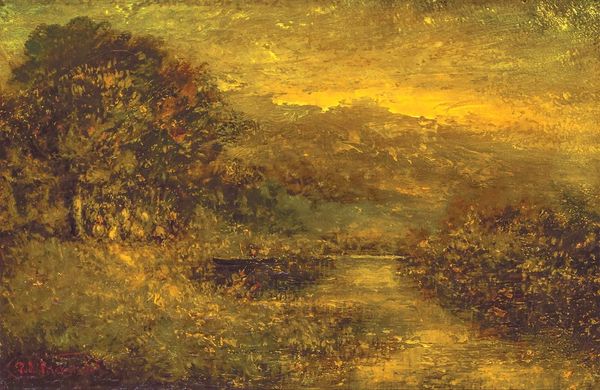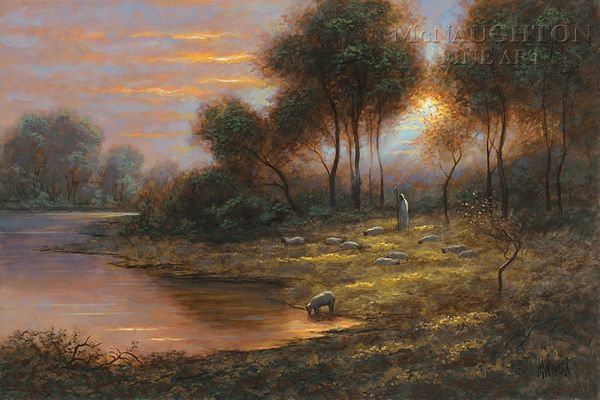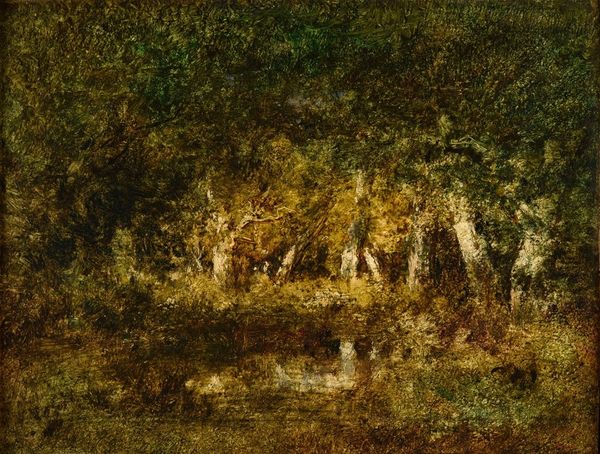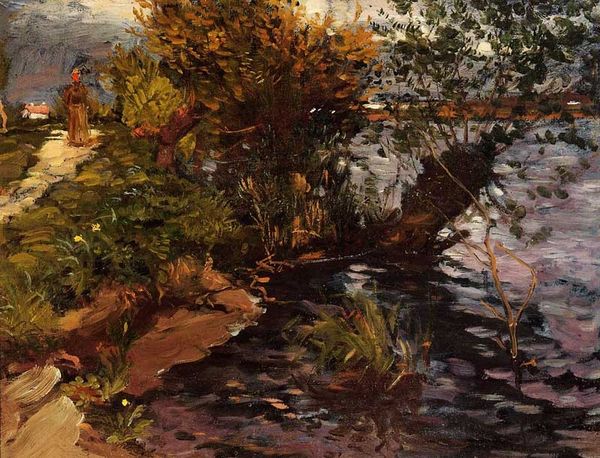
painting
#
painting
#
landscape
#
romanticism
#
realism
Dimensions: 15 3/8 × 20 1/2 in. (39 × 52 cm)
Copyright: Public Domain
Thomas Fearnley painted this evocative ‘Study of Water and Plants’ with oil on canvas in the early 19th century. At first glance, this appears to be traditional landscape painting. But let’s consider its materiality: oil paint, made from pigment, typically derived from the earth, mixed with linseed oil, pressed from the flax plant. The canvas, woven from either cotton or linen. These are all materials extracted from and shaped by the natural world. What’s intriguing is the interplay between these earthy materials and the subject matter: water, reflections, plants. Fearnley skillfully uses the fluid qualities of oil paint to capture the shimmering surface of the water, mirroring the surrounding foliage. The brushstrokes, though precise, retain a sense of spontaneity, echoing the organic forms of the vegetation. Paintings like this remind us of the material connections that exist between art and the environment, challenging us to consider our relationship with nature. It blurs the lines between representation and reality, prompting us to reflect on the role of art in shaping our understanding of the world.
Comments
No comments
Be the first to comment and join the conversation on the ultimate creative platform.
